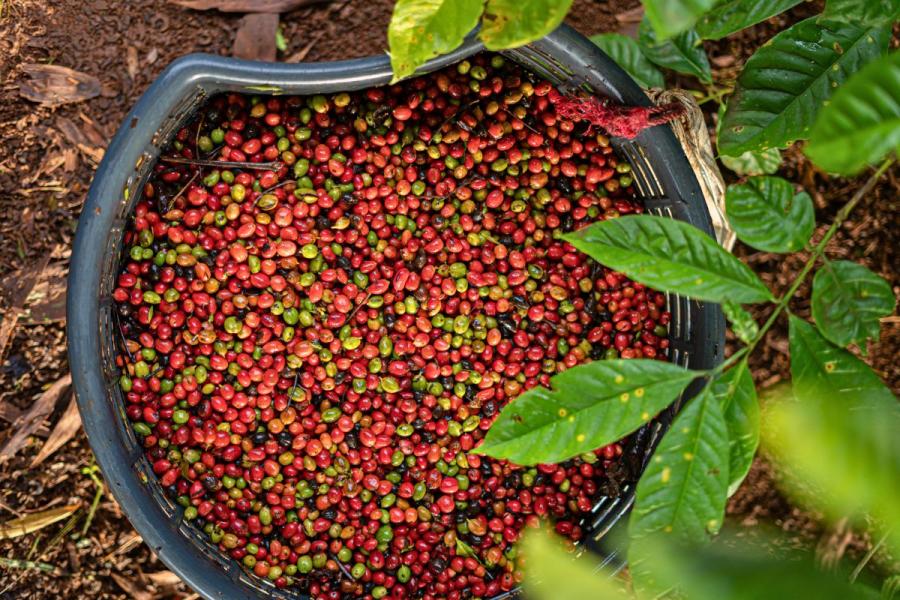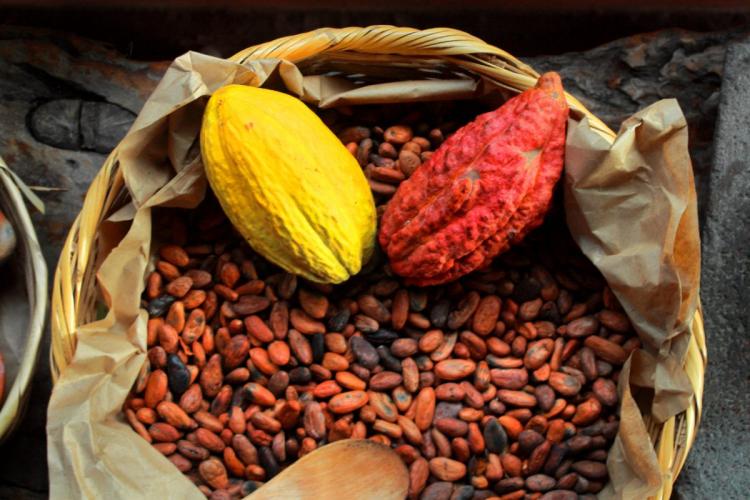Food in Honduras
Exploring the vibrant and diverse culinary landscape of Honduras, from baleadas to sopa de caracol.
Honduran cuisine is a fusion of indigenous Lenca, Spanish, Caribbean, and African cuisines, and like many Latin American countries, revolves around corn, beans, and a variety of fruits and vegetables that are native to the region. Traditional Honduran food is influenced by neighbor countries in Latin America, incorporating ingredients such as refried beans, corn tortillas, cheese, fried plantains, steak, chorizo, rice, avocado, and pico de gallo. The food culture is community-focused, with families and friends often gathering for meals and celebrations, and many traditions tied to their culinary practices.
Honduras is rich in its food production, thanks to its tropical climate and fertile soils. The country is known for its production of bananas, one of its major exports. Other crops include corn, beans, rice, and a variety of tropical fruits such as mangos, pineapples, and oranges. Honduras also has a vibrant fishing industry, with both coastal and freshwater fish being staple proteins. Cattle farming is another key part of the Honduran agriculture scene, providing beef and dairy products.
Meals in Honduras
The daily eating schedule in Honduras typically includes three meals: breakfast, lunch, and dinner. Breakfast (desayuno) is usually enjoyed between 6 and 9 a.m., featuring dishes like baleadas, which are tortillas filled with refried beans, cheese, and sometimes scrambled eggs or avocado. Fried plantains are a common component of a traditional Honduran breakfast, providing a sweet and savory balance to the meal. Lunch (almuerzo), the main meal of the day, typically served between 12 and 2 p.m., often includes a protein like chicken or beef, rice, beans, and a salad or cooked vegetables. Dinner (cena), eaten around 7 or 8 p.m., is typically lighter than lunch and may consist of leftover rice and beans, tortillas, and a light soup or stew.
Food etiquette
Honduran food etiquette is relatively informal and communal. It's common for meals to be served family-style, with dishes placed in the center of the table for everyone to share. It is considered polite to finish everything on your plate, as leaving food can be seen as wasteful or an implication that the food wasn't enjoyable.
Honduran Dishes
One of the most famous dishes in Honduras, baleadas are thick, handmade flour tortillas filled with refried beans, crumbled cheese, and crema (a sour cream-like condiment). Some variations also include scrambled eggs, avocado, or meat. Pickled onions are often served as a topping.
Borrowed from neighboring El Salvador but equally popular in Honduras, pupusas are thick corn tortillas stuffed with cheese, refried beans, or pork rinds.
Sopa de caracol, a type of soup made with coconut milk, spices, vegetables, and conch, a type of large sea snail. It’s considered a signature dish of the country, particularly on the Caribbean coast.
Honduran tamales are often wrapped in banana leaves and can be filled with a variety of ingredients including pork, chicken, cheese, and even fruits for a sweet version.
The plato típico (literally translating to “typical dish) is more a meal in a plate. This plate usually includes grilled beef or chicken, rice, refried beans, cheese, ripe plantains, and tortillas. It’s often served with a cabbage and tomato salad. It often includes carne asada.
Honduras is also known for a variety of intriguing recipes, such as pastelitos de carne, which are small, savory pastries filled with meat and rice. Ground pork meat is a common filling. These pastries are often topped with tomato sauce. Hondurans also enjoy tajadas, which are fried green or ripe plantain chips often served as a snack or a side dish.
When it comes to beverages, Hondurans love their coffee, which is often enjoyed black or with milk. Other traditional drinks include licuados, which are fruit smoothies made with milk or water, and horchata, a sweet beverage made with rice, cinnamon, and often sesame seeds, cacao, and nutmeg. A popular alcoholic drink is guaro, a liquor made from fermented sugarcane. For a refreshing non-alcoholic option, many enjoy coconut water, straight from the fruit, especially in the coastal regions.
Another popular drink, especially among children, is refresco de ensalada, a cold fruit salad drink that contains diced fruits such as apples, pineapples, and oranges soaked in apple juice or fruit-flavored soda.
Festive and special occasion foods
Food also plays an essential role during special occasions and festivals in Honduras. During Christmas, it is common to have tamales, while torrejas (a dish similar to French toast made with a syrup of panela, or unrefined whole cane sugar) and buñuelos (fried dough balls) are also traditional holiday foods.
During the Day of the Dead, a traditional dish called fiambre is prepared, which is a type of salad made with a variety of meats, pickled vegetables, and cheeses.
On the north coast, particularly in La Ceiba during the Carnival in May, you might find an Afro-Caribbean dish called tapado de pescado, a fish stew made with coconut milk, plantains, and a variety of seafood.
Street food including fried plantains
Honduran street food culture is also rich and varied, featuring many of the country’s iconic dishes like baleadas and pupusas. Street vendors also often sell grilled corn, a variety of fruit like mangoes and pineapples, and chicharrones, or fried pork rinds. Hot sauce is often added to enhance the flavor of these dishes.
Traditional cooking methods
Cooking methods in Honduras often involve traditional techniques that have been passed down through generations. Many foods are prepared on a comal, a smooth, flat griddle typically made from clay or cast iron. This is used to cook tortillas, roast coffee beans, and even heat the home during colder months.
For larger gatherings, a common cooking method is to prepare food al horno, or baked in an oven. This method is frequently used for making larger quantities of tamales or roasted meats for community events or family gatherings.
Regional variations
The cuisine can vary considerably by region in Honduras. The interior of the country, home to the capital Tegucigalpa, features more dishes with red meat and poultry, including a variety of soups and stews.
In contrast, the Caribbean coast, including cities like La Ceiba and Trujillo, sees a stronger influence from the Garifuna people, an Afro-Caribbean ethnic group. The food in these regions uses more coconut and seafood. Here, you might find dishes like sopa de caracol (conch soup), pescado frito con tajadas (fried fish with fried plantain chips), and machuca (a mash of plantains, usually served with a fish soup). Green plantains are a key ingredient in machuca.
Coconut bread is a popular accompaniment in coastal regions, often enjoyed with pescado frito con tajadas.
Honduran food in and out
The cuisine can vary considerably by region in Honduras. The interior of the country, home to the capital Tegucigalpa, features more dishes with red meat and poultry, including a variety of soups and stews.
In contrast, the Caribbean coast, including cities like La Ceiba and Trujillo, sees a stronger influence from the Garifuna people, an Afro-Caribbean ethnic group. The food in these regions uses more coconut and seafood. Here, you might find dishes like sopa de caracol (conch soup), pescado frito con tajadas (fried fish with fried plantain chips), and machuca (a mash of plantains, usually served with a fish soup). Green plantains are a key ingredient in machuca.
Coconut bread is a popular accompaniment in coastal regions, often enjoyed with pescado frito con tajadas.
Honduran food in and out
In recent years, food tourism has begun to grow in Honduras. This development has allowed visitors to engage with traditional Honduran foods through cooking classes, visits to local markets, and even farm tours where they can learn about the country’s agricultural products. Chili peppers are commonly used in traditional Honduran foods to add spice and flavor.
Internationally, Honduran cuisine is gaining recognition, particularly in cities with a large Honduran diaspora, such as New York, Miami, and Los Angeles. Here, you can find Honduran restaurants serving authentic baleadas, pupusas, and other traditional dishes, offering a taste of Honduras far from its borders.
In conclusion, the food culture in Honduras is diverse, vibrant, and deeply rooted in the country’s history and traditions. Whether it’s a simple baleada from a street vendor, a bowl of sopa de caracol in a coastal eatery, or a festive tamale during a holiday celebration, each dish tells a story about the people, the geography, and the cultural history of this fascinating Central American country.


